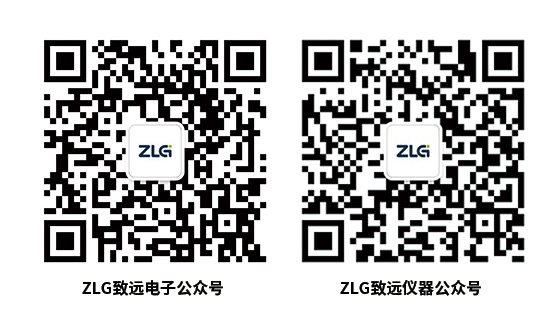Since its establishment in 2001, Zhiyuan Electronics has gradually increased its investment in basic technology research and product innovation and development, successively set up and improved environmental laboratory, EMC laboratory, safety laboratory, RF simulation laboratory, and measurement and calibration laboratory. It is engaged in building an international software and hardware research and development platform to provide a strong guarantee for creating products with advanced technology and excellent quality.
The laboratories belong to the company’s quality assurance system. Adhering to the principle of “scientific and rigorous, objective and fair, controllable standards and traceable data”, we have established a quality management system according to the requirements of ISO/IEC17025, providing product inspection, structural inspection, risk assessment and design consulting services, covering basically the selection of materials and components, circuits and PCB design, structural and industrial design, process scheme verification, comprehensive evaluation of prototypes and screening of aging products.
Zhiyuan Electronics attaches great importance to communication and cooperation with world-known third-party inspection and certification institutions (SGS, TUV, Intertek, etc.), involving international certification of products, interpretation of relevant standards and regulations, comparison of laboratory test data, etc., and combining product design and development with testing and certification. Through years of close communication and cooperation with authoritative third-party institutions, the testing capability and management of laboratories have been continuously improved, and the international certification speed of products has been accelerated as well.
With the rapid development of the company, we will further enhance the comprehensive strength of the laboratories to ensure that we can provide advanced, reliable and competitive products and technical services to our customers.
Environmental laboratory
We have complete environmental test equipment. Based on GB/T2423, GB4208, GJB150 and GJB1032A series standards, we simulate the climate and mechanical stress environments, and conduct environmental tests on the whole machine or parts of the product such as high temperature, low temperature, temperature cycle, damp heat, salt spray, vibration, drop and IP protection so as to accelerate the exposure of defects in component selection, structural design, thermal design and production process. This can constantly improve and optimize the environmental adaptability of products or parts.
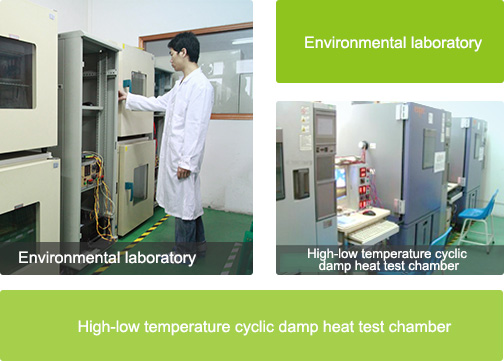
Standard range
Based on the allocation of resources, the laboratories can conduct environmental adaptability tests on information technology equipment, test and measurement instruments, power supply, automotive electronics, medical equipment, rail transit and power equipment. Relevant standards include:
GBT2423.17-2008 Environmental testing for electric and electronic products
GJB1032-1990 Environmental stress screening process for electronic products
GB 4208-2008 Degrees of protection provided by enclosure (IP code)
GJB 150.3A-2009 Laboratory environmental test methods for military materials
Evaluation items
Low temperature storage and operation
High temperature storage and operation
Constant damp heat, cyclic damp heat
IP protection
Vibration, impact, free fall
EMC laboratory
We have advanced EMC testing systems from brands such as EMTEST, HAEFELY, Agilent, TESEQ and KIKUSUI, which are at an advanced position among domestic peers and can fully meet the requirements of IEC, EN, CISPR and GB. The laboratory is equipped with a number of experienced full-time EMC engineers who can complete the EMC testing, analysis, evaluation, rectification and verification of products in measuring instruments, industrial automation, information technology equipment, electric power, rail transit, automobiles and medical treatment. The 3m semi-anechoic chamber being built in the R&D Center will further enhance the comprehensive capability of the EMC laboratory.
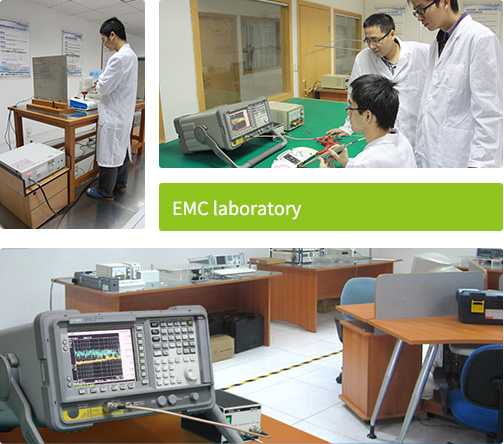
Standard range
Based on the allocation of resources, the laboratories can conduct environmental adaptability tests on information technology equipment, test and measurement instruments, power supply, automotive electronics, medical equipment, rail transit and power equipment. Relevant standards include:
EN55022:2010、EN55024:2010
EN61326-1:2013、EN61326-2-1:2006
GB/T17626.2-2006、GB/T17626.4-2008、GB/T17626.5-2008、GB/T17626.6-2008、GB/T17626.8-2006、GB/T17626.11-2008、GB/T17626.29-2006
Evaluation items
ESD immunity
EFT immunity
Surge (impact) immunity
Measurement of conducted disturbance
Immunity to power frequency magnetic field
Near-field scanning of electromagnetic disturbance
Immunity to conducted disturbance induced by RF field
Immunity to voltage sag, short-term interruption and voltage change
Immunity to voltage sag, short-time interruption and voltage change at the input port of DC power supply
Safety laboratory
The safety laboratory is equipped with relatively complete safety test equipment, which covers information technology equipment, power supply, measuring instruments, electric vehicle charging facilities, polymer lithium-ion batteries, wires and cables, etc. Based on the safety standards such as UL, ETL, EN/IEC and CCC, the laboratory can carry out structural inspection and key parts confirmation as well as label durability, push-pull force, AC/DC withstand voltage, electrical insulation, leakage current, ground resistance, single point fault and temperature rise, etc., ensuring the safety performance of electronic and electrical products.
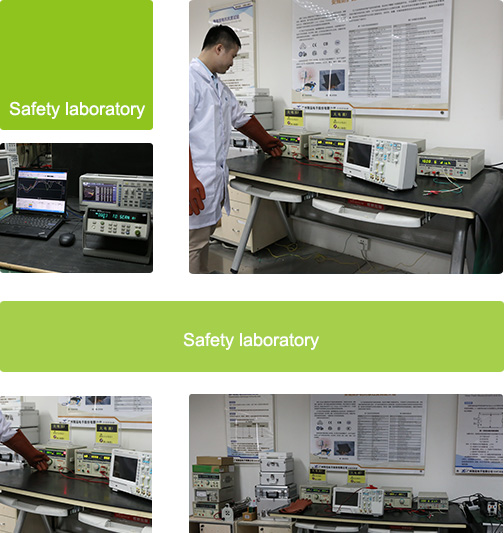
Standard range
Based on the allocation of resources, the laboratories can conduct environmental adaptability tests on information technology equipment, test and measurement instruments, power supply, automotive electronics, medical equipment, rail transit and power equipment. Relevant standards include:
IEC/EN/UL60950-1/-21/-22/-23, CSAC22.2 NO.60950-1, AS/NZS60950.1, J60950, K60950
GB 4793.1-2007、GB 4793.2-2008、GB 4793.5-2008
GB/4943.1-2011、GB/T 18384.X-2015
IEC/EN61010-2-030:2010、UL61010-2-030-2012
IEC/EN61010-2-032:2012
IEC/EN 61010-1:2010
Evaluation items
Input test
Contact current test
Capacitance discharge test
Drop test
Exception test
Load test
Limited power test
Ball pressure test
Power cord tension test
Humidity test
Label durability test
Electric strength test
Operating voltage
Stability test
Limited current circuit test
Stability test
Ground continuity test
Creep distance and electric clearance
Steel ball impact test
Temperature rise test
Torque test of direct plug-in equipment
Stress relief test
Cyclic damp heat
Heat and flame resistance
RF simulation laboratory
We have oscilloscopes, signal analyzers, impedance analyzers, network analyzers, high-performance serial bit-error testers, high-precision LCR meters, 8-bit semi-digital multimeters, signal generators, etc. from world-known brands such as Agilent, Keysight, Tektronix, Keithley, LeCroy and FLUKE. They can be used to complete the measurement, analysis and evaluation of impedance characteristics, signal integrity and power supply integrity from components, board level to system level. It supports the radio frequency measurement of wireless products such as RFID, Bluetooth, WiFi, ZigBee and LoRa, and involves the debugging and measurement of antenna characteristics (frequency range, gain, bandwidth, etc.) and RF characteristics (transmission power, receiving sensitivity, center frequency offset and output electrical port impedance, etc.).
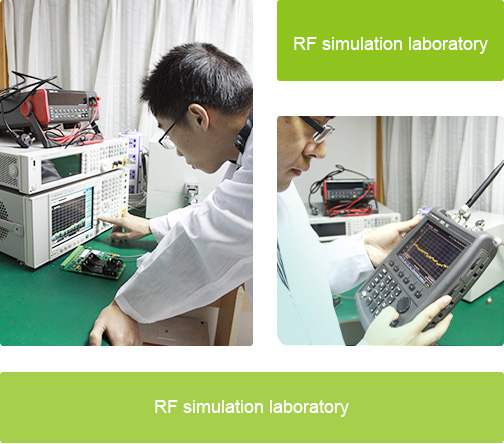
Standard range
Based on the allocation of resources, the laboratories can test and verify the antenna performance index and RF characteristics of wireless products such as RFID, Sub-GHz, Bluetooth, Wi-Fi, ZigBee and LoRaWAN. Relevant standards include:
ISO14443A/B
IEEE 802.11 a/b/g/n、IEEE 802.15.4
ISO 18000-6B,ISO 18000-6C,IPICO EPCglobal Class1 Gen-2
Evaluation items
Impedance characteristic
Protocol consistency
S parameter
Spectral analysis
Jitter
Receiving sensitivity
Transmission power
Standing-wave ratio of antenna, etc.
Output electrical port impedance
Eye diagram
Measurement laboratory
We have multifunctional calibrators, power standard sources, precision shunts, standard resistors and AC voltage standard systems from world-known brands such as FLUKE and Agilent. We can measure and calibrate digital multimeters, oscilloscopes, power quality analyzers, logic analyzers, CAN bus analyzers, power meters, power analyzers, voltage monitoring terminals and other products based on verification regulations such as JJG and JJF. All calibration results can be traced back to the corresponding national standards.
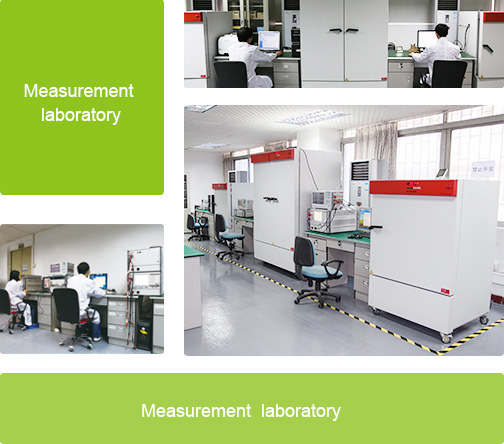
Standard range
In order to ensure the accurate and consistent values of instrument products and reliable measurement data, we abide by the corresponding national verification regulations or calibration specifications by default, and then the calibration instructions compiled by the company in the actual measurement and calibration process. Relevant standards include:
JJG315-1983 Verification regulation of DC digital voltmeter
JJG124-2005 Verification regulation of ammeter, voltmeter, power meter and resistance meter
DL/T1028-2006 Verification regulation of power quality testing and analysis instrument
JJG (aerospace) 34-1999 Verification regulation of AC digital voltmeter
JJF (aerospace) 30101-2007 Specification for DC electronic load calibration
JJF (electronics) 30306-2010 Specification for calibration of differential probe of oscilloscope
Evaluation items
Frequency
Flicker value
Electric energy
Power factor
AC voltage, DC voltage
AC current, DC current
AC power, DC power
Phase difference, three-phase unbalance
Harmonic ratio, harmonic power, harmonic distortion rate
